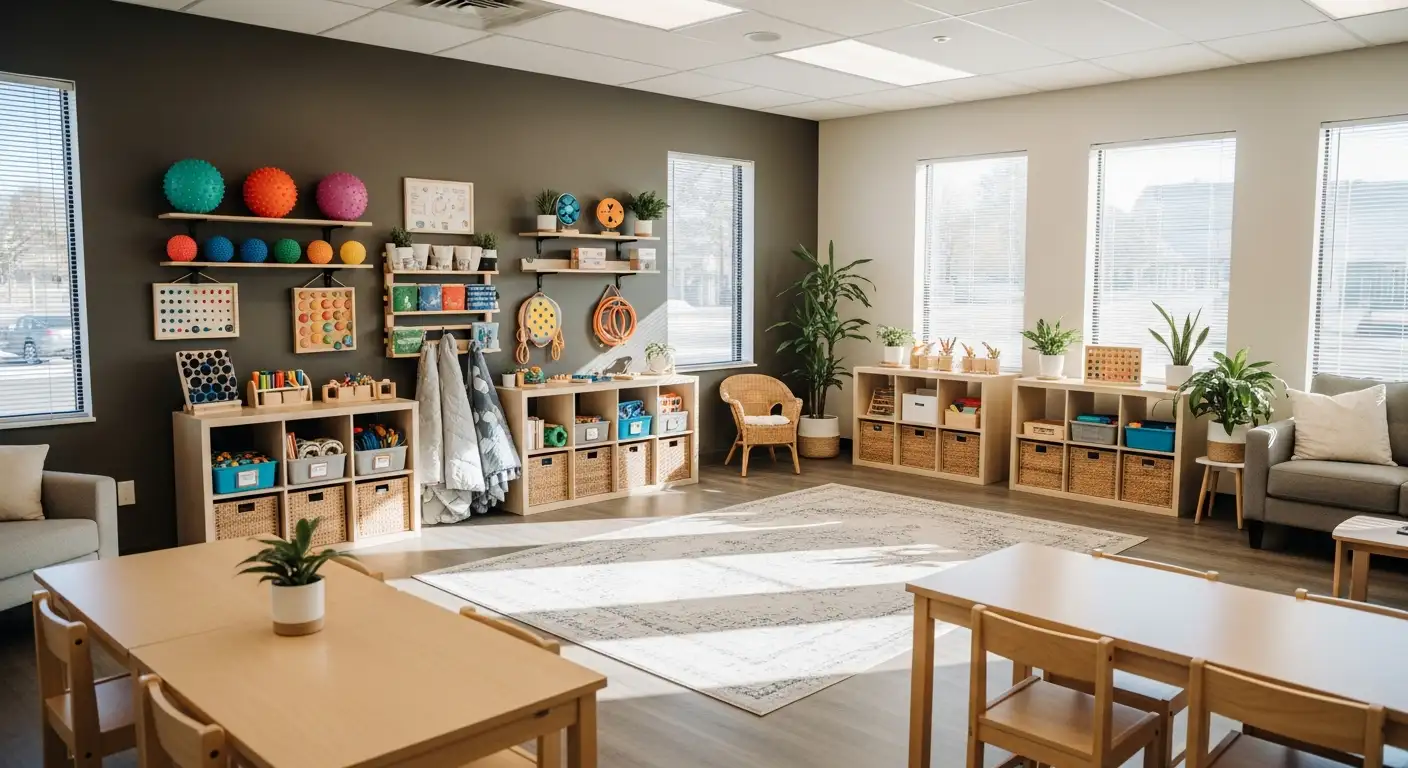Speech Therapy in Autism Treatment


Introduction to Speech Therapy for Autism
Speech therapy is a pivotal component in the autism treatment arsenal, offering indispensable support for enhancing communication and social interaction skills. Understanding the nuances of speech-language therapy provides insight into its transformative effects on individuals with Autism Spectrum Disorder (ASD). This article delves into comprehensive strategies employed by speech-language pathologists (SLPs) and how these interventions seamlessly integrate into broader autism treatment plans, fostering improved quality of life for many.
Conducting Speech Therapy for Autistic Children

How is speech therapy conducted for children with autism?
Speech therapy for children with autism is a structured and individualized process. Speech-Language Pathologists (SLPs) begin by conducting thorough assessments to understand each child's unique communication strengths and challenges. This ensures therapy is tailored specifically to their needs, focusing on enhancing both verbal and nonverbal skills.
Individualized therapy plans
SLPs design personalized therapy plans that incorporate various strategies and techniques, aiming to improve communication abilities. Common methods include:
- Visual aids: Tools like the Picture Exchange Communication System (PECS) assist in connecting words with meanings, making it easier for children to express themselves.
- Gestures and AAC: Children may also learn to use sign language or communication devices, easing frustration for those who struggle to speak verbally.
Verbal and nonverbal skills enhancement
Verbal skills are cultivated through activities such as pronunciation practice and speech sound production exercises, while nonverbal skills involve teaching body language and visual cues that are vital for social interactions. For instance, SLPs may use fun activities that involve music, as many autistic children respond well to rhythmic stimuli, aiding their language processing.
Family involvement in therapy
Family plays a critical role in speech therapy. Their participation encourages practice at home, reinforcing skills learned in therapy sessions. SLPs often provide strategies for families to help maintain consistency across different environments.
Early intervention
Research shows that early intervention significantly improves communication outcomes. Initiating therapy during crucial developmental periods helps autistic children better navigate their social world, facilitating effective communication skills that will benefit them throughout their lives.
Effective Practices in Speech Therapy for Autism

What are effective speech therapy practices for children with autism?
Effective speech therapy practices for children with autism encompass a variety of engaging techniques designed to improve both verbal and non-verbal communication skills.
- Engaging Techniques for Communication: Activities that involve animal sound play or teaching essential words can transform communication sessions into fun experiences. These activities promote practical communication, helping children express their needs creatively.
- Use of PECS and Interactive Storytelling: The Picture Exchange Communication System (PECS) is essential for non-verbal children, allowing them to communicate by exchanging pictures to express their desires. Coupled with interactive storytelling, this approach enhances children's comprehension and aids in expressing their thoughts and emotions.
- Positive Reinforcement Strategies: Incorporating positive reinforcement motivates children to participate actively during speech therapy sessions. When they make attempts to communicate and receive praise or rewards, it encourages them to engage more frequently.
- Tailored Approaches by SLPs: Speech and Language Pathologists assess each child's specific needs and tailor speech therapy sessions accordingly. This personalized approach ensures that the therapy aligns with the individual’s learning styles and interests, providing the best chance for significant communication improvements.
These effective practices work together to create an environment where autistic children can thrive in their communication skills, significantly enhancing their overall interaction abilities.
Addressing Speech Delays in Autism

How does speech therapy assist individuals with autism who also experience speech delays?
Speech therapy plays a vital role for individuals with autism spectrum disorder (ASD) who experience speech delays. Spearheaded by licensed speech-language pathologists (SLPs), the therapy offers personalized strategies that improve communication skills through a variety of engaging methods.
One effective approach is play-based therapy, which makes learning active and enjoyable. This method encourages the use of language in a natural setting, allowing children to express themselves while having fun. Visual supports, such as picture boards and the Picture Exchange Communication System (PECS), help autistic children make connections between words and meanings, laying a foundation for verbal communication.
Additionally, speech therapy emphasizes the development of social interaction skills. For many children with ASD, this includes improving nonverbal communication skills through the use of gestures, eye contact, and facial expressions, which are necessary for effective engagement in conversations.
Enhancing Social Interactions
Fostering social interactions is central to the objectives of speech therapy. Therapists utilize role-playing exercises and social stories to teach children appropriate ways to initiate conversations and respond to peers. This guidance helps autistic individuals navigate social settings with greater confidence.
Furthermore, focusing on spontaneous communication encourages children to express their needs and feelings without prompts. Learning to communicate functionally reduces frustration, which is common among individuals with speech delays who struggle to express themselves.
Nonverbal Communication Skills
Nonverbal communication is often a significant area of difficulty for individuals with autism. SLPs address this through structured activities that teach various forms of nonverbal cues. For example, incorporating hand signals, body language interpretation, and even music can enhance the learning experience.
By improving these skills alongside verbal communication, therapy enables individuals to engage more effectively in everyday interactions, ultimately leading to enhanced relationships with peers and family members.
As progress is made, children begin to gain confidence that carries over to other environments, supporting a smoother transition from therapy settings to real-life social scenarios.
Integrating Speech Therapy into ASD Treatment Plans

How Is Speech Therapy Integrated into Broader Treatment Plans for Autism Spectrum Disorder (ASD)?
Speech therapy is an integral component of treatment plans for Autism Spectrum Disorder (ASD), centering on the enhancement of communication skills, both verbal and nonverbal. This therapy aids individuals in expressing their needs and feelings effectively, which can significantly reduce challenging behaviors and enhance their independence and dignity.
Role of AAC Methods
One essential aspect of speech therapy involves the use of Augmentative and Alternative Communication (AAC) methods. These can include:
- Sign Language: A vital tool for non-verbal individuals to communicate.
- Picture Exchange Communication System (PECS): Utilizing images to help children convey their thoughts.
- Electronic Communication Devices: Offering technological support for enhancing expression.
Social Skills Training
Social skills training is also a critical focus within speech therapy. Through structured activities, therapists help individuals with ASD learn:
- Making Eye Contact: Essential for effective communication.
- Interpreting Social Cues: Understanding body language and facial expressions.
- Maintaining Personal Space: Encouraging appropriate social distances.
Collaboration with Other Therapists
Collaboration with other professionals, such as occupational therapists and educators, is crucial for the success of these treatment plans. This team approach ensures a comprehensive strategy that supports the child's development in home, school, and social settings, enhancing the effectiveness of speech therapy in achieving meaningful progress.
Broad Benefits of Speech Therapy for Autism

What are the overall benefits of speech therapy for individuals with autism?
Speech therapy offers comprehensive benefits for individuals with autism by enhancing both verbal and non-verbal communication skills. It provides tailored support through personalized assessments, which help children express their needs and understand body language effectively.
The therapy significantly improves quality of life by teaching children how to initiate spontaneous communication and develop social interaction skills. These capabilities are crucial for building friendships and participating in various activities, allowing children with autism to engage more meaningfully with their peers.
Additionally, speech therapists may also address feeding and swallowing challenges, ensuring a holistic approach to each child's needs. For instance, tools like the Picture Exchange Communication System (PECS) help non-verbal children communicate effectively using visual aids. This comprehensive support fosters independence, reduces frustration in communication, and promotes effective interactions across different social contexts, contributing to a more fulfilling life.
Overall, speech therapy is a vital element in helping children with autism communicate more effectively, enriching their social experiences and overall quality of life.
Strategies for In-Home Speech Therapy Practice
Practical exercises at home
Incorporating speech therapy exercises into daily life can be beneficial for children with autism. Activities like making animal noises or using favorite toys can encourage communication and vocabulary building. For instance, encouraging your child to use words to express their wants during playtime fosters functional communication skills.
Parental involvement
Parental participation is essential in reinforcing skills learned during therapy sessions. This can include using visuals like communication boards or picture cards that aid in expressing needs. Families can create environments that promote spontaneous communication by modeling language during routine activities like meals or reading time.
Routine practice benefits
Establishing a consistent practice routine enhances speech therapy outcomes. Regularly scheduled activities, such as speech exercises or reinforcement of vocabulary during daily tasks, help children generalize their skills beyond therapy sessions. By embedding practice within everyday contexts, children with autism can develop their communication skills more effectively.
Conclusion: Embracing Speech Therapy's Transformative Potential
Speech therapy is indispensable in the treatment of autism, providing essential tools for unlocking the communication potential of individuals on the spectrum. By embracing tailored intervention strategies, early diagnosis, and family involvement, speech therapy elevates the prospects of autistic individuals to communicate effectively and navigate the world with greater confidence and autonomy. As understanding of autism continues to grow, so too does the potential for speech therapy to make a profound impact in the lives of those it serves.
References
- Speech-Language Therapy for Autism | NICHD
- The Five Pillars of Speech Therapy for Children with Autism
- Autism (Autism Spectrum Disorder) - ASHA
- Speech therapy for autism: Benefits, examples, and more
- Speech Therapy for Autism: How It Works - Healthline
- 15 Speech Therapy Exercises for Children with Autism - Stamurai
- Speech and Language Therapy for Autism - ASD Clinic
- Speech Services For Children With Autism: 5 Strategies That Work
Recent articles

How Occupational Therapy Helps Children with Sensory Processing Issues
Unlocking Potential: The Transformative Role of Occupational Therapy in Sensory Processing

Does Mold Cause Autism
Exploring Environmental Factors in Autism Spectrum Disorder: Beyond Mold

The Benefits of ABA Therapy for Non-Verbal Children
Unlocking Communication: How ABA Therapy Transforms the Lives of Non-Verbal Children

The Role of Speech Therapy in Developing Social Language Skills
Unveiling the Impact of Speech Therapy on Social Language Development

Dairy And Autism
Exploring Dietary Dynamics in Autism: The Role of Dairy and Beyond

Lead Exposure & Fevers During Pregnancy Lead to Autism
Exploring the Impact of Prenatal Environmental Factors on Autism Spectrum Disorder Severity


